Spinal cord injury
What is Spinal cord injury?
A spinal cord injury(SCI) is an injury to the spinal cord at the spinal canal. Depending on the severity, you may lose movement, and sensation in various parts of your body. Spinal cord injury (SCI) occurs due to direct injury of the spinal cord itself or damage to the vertebrae that surround the spinal cord. The most common Treatment options are surgery, medication, and physical therapy.
The spinal cord is a bundle of nerves and different tissue that the vertebrae of the spine includes and protects. The vertebrae are the bones stacked on top of per other that make up the spine. The spine includes many nerves, and lengthens from the brain’s bottom down the back, ending near the buttocks.
The spinal cord is liable for transmitting messages from the brain to all regions of the body. It also transmits notes from the body to the brain. We’re capable to perceive pain and move our limbs because of notes sent via the spinal cord.
If the spinal cord carries an injury, some or all of these impulses may not be capable to obtain through. The outcome is a complete or total loss of feeling and mobility below the injury. A spinal cord injury nearer to the neck will generally induce paralysis throughout a bigger portion of the body than one in the lower back region.
Anatomy of the spinal cord
The spinal cord is a soft, cylindrical queue of tightly bundled nerve cells (neurons and glia), nerve fibers that send nerve signals (known as axons), and blood vessels. It transmits and obtains data between the brain and the remains of the body. Millions of nerve cells located in the spinal cord itself even coordinate complex ways of motion like rhythmic breathing and walking.
The spinal cord prolongs from the brain to the lower back via a canal in the middle of the bones of the spine. Such as the brain, the spinal cord is covered by three coatings of tissue and is covered by the cerebrospinal fluid (CSF) that works as a protector against shock or injury.
Inside the spinal cord are:
A cluster of neurons and their projections that attach with further nerve cells to send and obtain information (gray matter)
Bundles of axons, some of which are covered with a whitish variety of proteins and fat-like substances (white matter)
Further varieties of nerve cells sit slightly outside the spinal cord and relay data to the brain. 31 pairs of nerves, per of which includes thousands of axons, are split into four parts with separate segments that connect the spinal cord to muscles and further parts of the body:
Cervical spinal nerves (C1 to C8) arise from the spinal cord in the neck and manage signals to the back of the head, the arms and hands, the neck and shoulders, and the diaphragm.
Thoracic spinal nerves (T1 to T12) arise from the spinal cord in the upper mid-back and manage signals to the chest muscles, a few muscles of the back, and numerous organ systems, involving regions of the abdomen.
Lumbar spinal nerves (L1 to L5) arise from the spinal cord in the low back and manage signals to the lower regions of the abdomen and the buttocks, the back, some regions of the external genital organs, and regions of the leg.
Sacral spinal nerves (S1 to S5) arise from the spinal cord in the low back and manage signals to the thighs and lower regions of the feet, the legs, most of the external genital organs, and the region near the anus.
The spinal column, which covers and defends the spinal cord, is created up of 33 circles of bone (vertebrae), cushions of semi-rigid cartilage (discs), and narrow areas known as foramen that work as paths for spinal nerves to cross to and from the remains of the body. The spinal cord is especially vulnerable to direct injury within these regions.
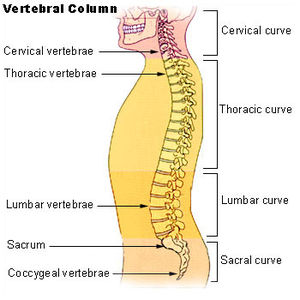
How does a spinal cord injury involve the body?
The body loses many important roles if the damaged spinal cord can’t transfer the signal to the brain. A damaged spinal cord can involve:
- Bladder and bowel (intestinal) role.
- Breathing.
- Heart rate.
- Metabolism, or the body’s function of transforming food into energy.
- Muscle motion.
- Reflexes.
- Sensations.
What are the types of spinal cord injuries?
Spinal cord injuries can be full or incomplete (partial):
Complete: A complete injury induces total paralysis (loss of role) below the level of the damage. It involves both sides of the body. A complete injury may generate paralysis of all four limbs (quadriplegia) or the inferior half of the body (paraplegia).
Incomplete: After an incomplete injury, some role stays on one or both sides of the body. The body and brain can still convey along specific courses.
Levels of Spinal Cord Injury
Four sections of the spinal cord impact the level of spinal cord injury: cervical, thoracic, lumbar, and sacral. Each part of the spine defends various groups of nerves that regulate the body. The variety and severity of spinal cord injuries can depend on the area of the spine that is damaged.
What are the symptoms of a spinal cord injury?
The symptoms of a spinal cord injury differ from patient to patient.
A patient should seek medical supervision if any of the subsequent symptoms are current following an accident or injury:
- extreme pain in the neck, head, or back
- weakness or incapability to walk
- problem in breathing
- problem with balance and coordination
- numbness or tingling in the extremities
- failure of bladder or bowel control
Keeping these symptoms does not necessarily mean that a patient has a spinal cord injury. Occasionally, a damaged backbone can place stress on the spinal cord, inducing symptoms that may go away after the bone recovers.
Yet, the severe nature of spinal cord injuries indicates that it is ever essential to seek emergency medical supervision if these symptoms seem.
Anyone who is with a patient who may have maintained a back injury should avoid attempting to raise or move them, as this could seriously aggravate any injury.
Long-term symptoms
A person who has spinal cord damage may have some or all of the subsequent symptoms throughout their life:
- loss of motion of specific regions of the body
- loss of feeling or change in sensation
- loss of bowel or bladder control
- pain, which can vary from mild to extreme
- muscle spasms
- abnormal reflexes
- loss of sexual function
- infertility
- a problem in walking or maintaining balance
- a problem with breathing or coughing
- A patient’s symptoms will rely on the severity of the injury and which region of the spinal cord is involved.
Causes of Spinal cord injury
Spinal cord injuries have type causes, involving:
- hard effects and collisions in sports
- automobile accidents
- falls
- hitting the head when diving
- injuries from violent stunts, like gunshot wounds
- specific varieties of cancer
- arthritis
- typical varieties of infections
- some medical diseases, like spina bifida and polio
Risk factors
Although a spinal cord injury is generally the outcome of an accident and can occur to anyone, specific elements can predispose you to be at more increased risk of carrying a spinal cord injury, involving:
Being male. Spinal cord injuries include a disproportionate number of males. Women account for only approximately 20% of traumatic spinal cord injuries in the United States.
Being between the years of 16 and 30. More than half of spinal cord injuries happen in a patient in this age range.
Being 65 and older. Another spike in spinal cord injuries happens at age 65. Falls generate the most damage in older grown-ups.
Alcohol use. Alcohol use is included in approximately 25 % of traumatic spinal cord injuries.
Engaging in risky behavior. Descending into too-shallow water or playing sports without wearing the appropriate protection gear or carrying suitable precautions can guide to spinal cord injuries. Motor vehicle crashes are the leading reason for spinal cord injuries for a patient under 65.
Having certain diseases. A fairly little injury can generate spinal cord harm if you have another disease that involves your joints or bones, like osteoporosis.
Differential Diagnosis
- Aortic Artery Dissection
- Epidural and Subdural Infections
- Spinal Cord Infections
- Syphilis (Tertiary)
- Vertebral Fracture and here
- Acute Transverse Myelitis
- Acute Intervertebral Disk Herniation
- Spinal Abscess
How is a spinal cord injury diagnosed?
In an emergency, a healthcare provider or doctor makes sure a spinal cord injury isn’t involving your breathing or heart rate. Subsequently, they’ll evaluate how well your nerves are functioning. The provider or doctor examinations:
The motor role, or your capability to move regions of your body.
Sensory function or your capability to feel touch.
Specific imaging examinations can assist diagnose a spinal cord injury:
CT scan, to visit broken bones, blood clots, or blood vessel harm.
MRI, to notice the spinal cord or soft tissues.
X-ray, to display damaged bones or dislocations (bones knocked out of location).
A healthcare provider or doctor may also use an electromyogram (EMG) to inspect electrical activity in muscles and nerve cells if there are co-existing peripheral nerve injuries. (EMG is generally not required in a spinal cord injury.)
What is the immediate therapy for a spinal cord injury?
You may require emergency surgery for a spinal cord injury if there’s trauma to another region of the body. Surgery can also manage spinal cord harm from broken bones, blood clots, or harmed tissue.
Some analysis indicates that a corticosteroid injection may assist with spinal cord injuries. The drug should be delivered within eight hours after the injury happens. This therapy may:
- Enhance blood flow.
- Preserve nerve function.
- Decrease inflammation.
Medical Management
The perfect management of acute spinal cord injury is a mixture of pharmacological treatment, early surgery, forceful volume resuscitation, and blood pressure raise to maximize spinal cord perfusion, early rehabilitation, and cellular treatments.
Pharmacological Intervention
There is still no generally obtained pharmacological agent. The most essential patients are
Glucocorticoids (Methylprednisolone), suppress many of the secondary circumstances of spinal cord injury. These are lipid peroxidation, inflammation, and excitotoxicity. Randomized clinical tests are contradictory in their outcomes and so are the ideas of professionals.
Thyrotropin-releasing Hormone (TRH) displays antagonistic results against the secondary injury mediators.
Polyunsaturated Fatty Acids (PUFA) like Docosahexaenoic Acid (DHA) have just been studied for spinal cord injury management. It is said to enhance neurological healing via improved neuronal and oligodendrocyte survival and reduced microglia/macrophage reactions, which decreases the axonal accumulation of B-Amyloid Precursor Protein (b-APP) and improves synaptic connectivity. Also, Eicosapentaenoic Acid (EPA) improves synaptic connectivity, to fix neuroplasticity.
Cellular Therapy Interventions
Traumatic Spinal cord injury – SCI conveys heterogeneous and complex pathophysiology. While pre-clinical analysis of Spinal cord injury – SCI has been a continuous endeavor for over a century, our knowledge of Spinal cord injury – SCI mechanisms have improved significantly over the past few decades. This is primarily due to the growth of new transgenic and preclinical animal samples that have promoted fast findings in Spinal cord injury – SCI mechanisms. Although Spinal cord injury – SCI analysis has produced an amazing advancement, much work is still required to solve the earned knowledge from animal analyses to clinical applications in humans.
Cellular therapies aim to deliver functional healing of the deficit via axonal regeneration and restoration.
Schwann Cell is one of the considerably widely used cell varieties for the repair of the spinal cord.
Olfactory Ensheating Cells are qualified of encouraging axonal regeneration and remyelination after injury.
Bone Marrow derived Mononuclear Cell (BM-MNC) transplantation is possible, secure, and has a fine degree of outcome progress.
Stimulated Macrophages plague the damaged tissue.
Physiotherapy treatment in Spinal cord injury
The rehabilitation of persons who had a spinal cord injury relies on which level of the spine the injury happened. Even, the therapy relies on whether it was a full or incomplete spinal cord injury. In the circumstance of an incomplete spinal cord injury, 25% do not evolve separated ambulators. The treatments vary according to where the lesion occurred, cervical, thoracic, or lumbar. The rehabilitation of Spinal cord injury – SCI is a multidisciplinary method.
Possible Upper Incomplete SCI Therapy:
When the cervical spine is damaged, the outcomes for the person are life-changing. Persons require therapy for motion and strength healing of the upper body and likely respiratory training. Respiratory muscle activity consists of expiratory, inspiratory, or both progress in muscle strength and endurance. Normocapnic hyperpnoea is a process of respiratory muscle endurance exercise that simultaneously teaches the inspiratory and expiratory muscles.
This machine consists of a re-breathing pack that performs at 30 to 40% of the person’s vital capacity and is attached to a pipe system and mouthpiece. The person must refill and offload the pack fully per breath. Further respiratory muscle training exists and is also useful.
Spinal immobilization should be the primary emphasis in persons with bone or ligament damage and the prevention of causing spinal cord injury. Workout of the upper limb after Spinal cord injury – SCI consists generally of typical activities or conventional treatment using Bobath principles mixed with functional electrical stimulation.
Possible Lower Incomplete SCI Therapy:
The main restrictions with lower incomplete Spinal cord injury – SCI persons are that they have leg paresis, decreased coordination, and impaired balance. These restrictions can be performed with the help of braces and tilt tables.
If the leg strength enhances, therapists can utilize parallel bars, braces, and further walking aids to perform on the balance weight-bearing of the person. In mix with those tools, the therapist requires to prepare the person using the redundant and intensive practice of gait.
The benefit of a treadmill with an overhead harness is used for specific Spinal cord injury – SCI patients and just by selection of the therapist. Thanks to the harness, persons can more efficiently concentrate on their gait under the control of their therapist. In extra to this treatment, the help of functional electrical stimulation is required to optimize the rehabilitation of the person.
New treatments are appearing and leading positive evolution, like robotic-assisted gait training. This treatment utilizes a treatment of 40 minutes twice a day at a rate of 5 times a week. 3 days utilizing robotic-gait training and 2 days of routine physical treatment. Contained in the regular physical treatment are, functional electrical stimulation and physical treatment utilizing the Bobath principles.
Complete healing after incomplete or complete Spinal cord injury – SCI is never possible.
Surgery
Sometimes, a surgeon may wish to bring a person to the operating room directly if the spinal cord seems to be squeezed by a herniated disc, blood clot, or further lesions. This is most generally done for persons with an incomplete Spinal cord injury – SCI or with advanced neurological deterioration. Even if surgery cannot change harm to the spinal cord, surgery may be required to stabilize the spine to control future pain or deformity. The surgeon will determine which method will deliver the greatest help to the person.
What is the long-term therapy for a spinal cord injury?
Long-term purposes of spinal cord injury therapy contain:
Improving independence and quality of life.
Decreasing the risk of chronic (ongoing) health diseases.
Fixing some nerve functions in partial damages.
Long-term difficulties of a spinal cord injury may contain:
- Incapability to control blood pressure or body temperature.
- Improved risk of heart or lung issues.
- Loss of bladder or bowel control.
- Paralysis in the arms or legs.
- Persistent pain.
- Spasticity, joint contracture.
- Sexual dysfunction.
Complications of Spinal cord injury
At first, differences in the path your body roles can be overwhelming. Yet, your rehabilitation team will assist you to develop mechanisms to manage the differences induced by the spinal cord injury, in extra to suggesting tools and help to upgrade your quality of life and independence. Locations frequently involved contain:
Bladder control.
Your bladder will persist to accumulate urine from your kidneys. Yet, your brain might not maintain your bladder as nicely because the message deliverer (the spinal cord) has been damaged.
The modifications in bladder control raise your risk of urinary tract infections. The differences may also generate kidney infections and kidney or bladder stones. During rehabilitation, you’ll discover ways to assist cleared your bladder.
Bowel control.
Although your stomach and intestines function greatly as they did before your injury, managing your bowel motions is frequently changed. A high-fiber diet might assist control your bowels, and you’ll learn methods to assist maintain your bowel during rehabilitation.
Pressure injuries. Below the neurological level of your injury, you might have failed some or all skin feels. Thus, your skin can’t transmit a note to your brain when it’s damaged by specific items like extended pressure.
This can create more exposure to pressure sores, but altering positions repeatedly with an asset, if required can assist control these sores. You’ll learn the right skin maintenance during rehabilitation, which can assist you to avoid these issues.
Circulatory control.
A spinal cord injury can generate circulatory issues varying from low blood pressure when you wake (orthostatic hypotension) to swelling of your extremities. These circulation shifts can also raise your risk of forming blood clots, like deep vein thrombosis or a pulmonary embolus.
Another issue with circulatory management is a potentially life-threatening elevation in blood pressure (autonomic dysreflexia). Your rehabilitation team will guide you on how to handle these issues if they impact you.
Respiratory system.
Your damage might make it more challenging to breathe and cough if your abdominal and chest muscles are involved.
Your neurological level of injury will decide what type of breathing issues you have. If you have a cervical and thoracic spinal cord injury, you might have a raised risk of pneumonia or further lung issues. Drugs and therapy can assist to control and treat these issues.
Bone density.
After spinal cord injury, there’s an improved risk of osteoporosis and fractures below the grade of injury.
Muscle tone.
Some patients with spinal cord injuries have one of two varieties of muscle tone issues: uncontrolled tightening or movement in the muscles (spasticity) or smooth and floppy muscles lacking muscle tone (flaccidity).
Fitness and wellness.
Weight loss and muscle atrophy are familiar shortly after spinal cord damage. Restricted mobility can conduct in a more lethargic lifestyle, putting you at risk of obesity, cardiovascular condition, and diabetes.
A dietitian can assist you to eat a nutritious diet to maintain a satisfactory weight. Physical and occupational therapists can assist you to create a wellness and exercise schedule.
Sexual health.
Males might see shifts in erection and ejaculation; females might see shifts in lubrication after a spinal cord injury. Physicians experts in urology or fertility can suggest choices for sexual functioning and fertility.
Pain.
Some patients have pain, like muscle or joint pain, from overuse of certain muscle groups. Nerve pain can happen after a spinal cord injury, particularly in a person with an incomplete injury.
Depression.
Coping with the shifts a spinal cord injury obtains and living with pain induces depression in some patients.
Nerve pain:
The analysis recommends that more than two-thirds of a patient who have spinal cord injuries feel long-term nerve pain. The pain may happen in regions of the body that still have a feeling, or it may involve regions that have small to no sensation.
Skin sores and injuries:
If a patient cannot feel specific regions of their body, they may not be conscious of any cuts, sores, or burns that they maintain in this location. They will require to do regular skin and nail examinations to examine for injuries to assist to control infections and further difficulties.
Blood clots:
Some patients may have blood pressure that is also low, which increases the risk of blood clots and swelling.
Stroke and cardiac arrest:
With some spinal cord damage, there is a risk of the blood pressure abruptly running dangerously high. Doctors guide this as autonomic dysreflexia, and it can show to heart attack, seizures, and stroke.
Risk of obesity:
If a patient cannot walk or shift as they earlier did, they may expend more time being inactive. This lifestyle modification can conduct to a patient having overweight or obese and create associated diseases, like type 2 diabetes and heart condition
Infertility:
Females with spinal cord injuries may have a problem obtaining pregnant, and these damages can occasionally control ejaculation in men.
Mental health conditions: A spinal cord injury can generate a reduction in mental health. Analysis results indicate that depression is positively prevalent among patients who have a spinal cord injury.
How to Prevent Spinal cord injury?
Following this suggestion might decrease your risk of a spinal cord injury:
Drive safely. Car collisions are one of the most familiar reasons for spinal cord injuries. Wear a seat belt every moment you’re in a moving car.
Make certain that your kids wear a seat belt or use an age- and weight-proper kid security seat. To save them from air bag damage, kids under age 12 should never ride in the back seat.
Inspect water depth before diving. Don’t dip into a pool unless it’s 12 feet (approximately 3.7 meters) or deeper, don’t dive into an aboveground waterhole, and don’t dive into water if you don’t understand how in-depth it is.
Prevent falls. Use a grade stool with a grab line to get high-up things. Add handrails along stairways. Place nonslip rugs on tile bottoms and in the tub or shower. For young kids, use security entrances to block stairs and think of lodging window protection.
Take protection when playing sports. Ever wear the suggested protection gear. Avoid conducting with your head in sports. For instance, don’t slide headfirst in baseball, and don’t attack using the lid of your helmet in football. Utilize a spotter for new actions in gymnastics.
Don’t consume and drive. Don’t move while drunk or under the effect of medications. Don’t ride with a motorist who’s been consuming.
FAQ
What happens if the spinal cord is damaged?
A spinal cord injury can generate one or more symptoms, including Numbness, tingling, or a loss of or shifts in feeling in hands and feet. Paralysis may occur instantly or evolve as swelling and bleeding involve the spinal cord. Pain or strain in your neck, head, or back.
What is the most common spinal cord injury?
According to the National Spinal Cord Injury Statistical Center (NSCISC), the two most familiar varieties of spinal cord injuries are incomplete tetraplegia and paraplegia, with incomplete spinal cord damages accounting for more than 65% of all SCIs.
Can spinal cord injury recover?
Unfortunately, there’s no method to reverse harm to the spinal cord. But investigators are constantly working on new therapies, involving prostheses and drugs, that might stimulate nerve cell regeneration or enhance the role of the nerves that stay after a spinal cord injury.
How long do spinal cord injury patients live?
The life longing for a patient aged 20 years who sorrows a high tetraplegia spinal injury and stays at least one year is about 33.7 years. This statistic displays the life expectancy for spinal cord injuries in the U.S. for those who stay at least one-year post-injury, as of 2021.
What is the new treatment for spinal cord injury?
Investigators at Northwestern University have formed a new injectable treatment that improves spinal cord injuries with the asset of ‘dancing molecules. ‘ The molecules create nanofibers that move about, creating it more feasible that they will convey with cells to begin repair of the injured spinal cord.

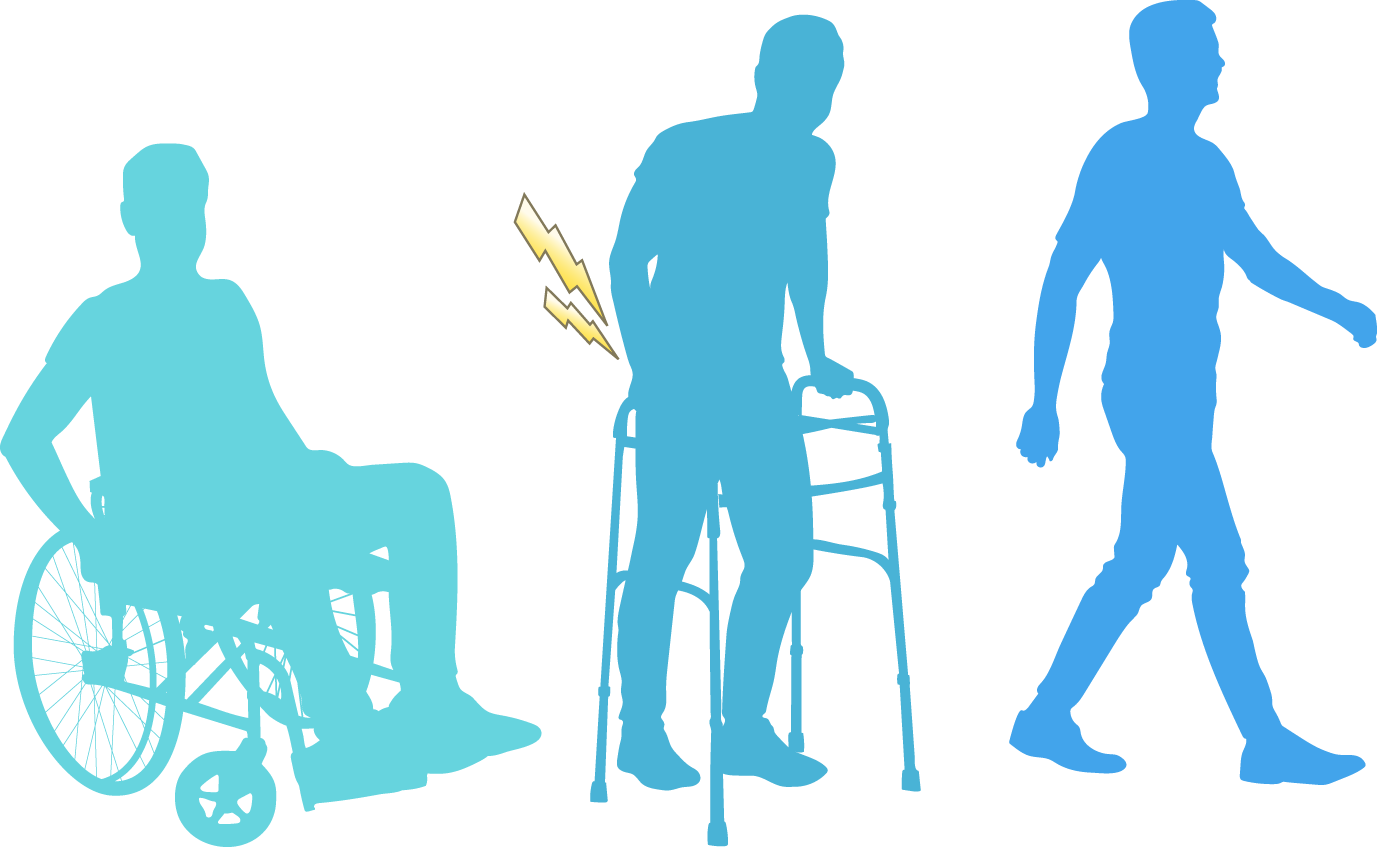
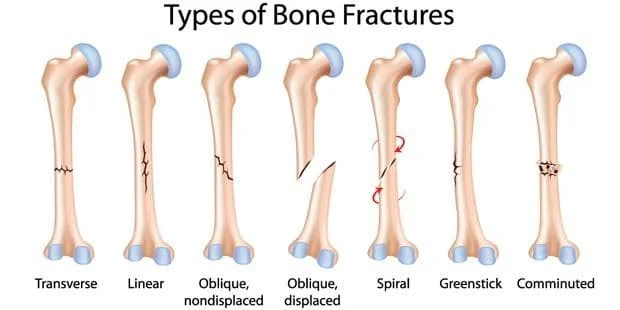

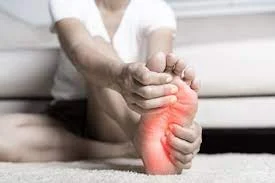
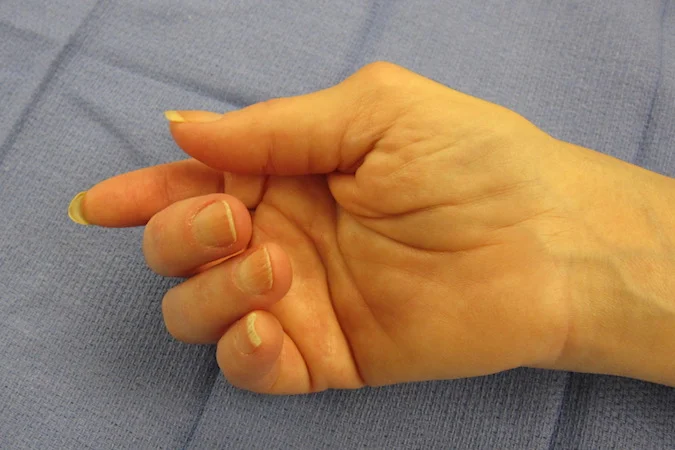
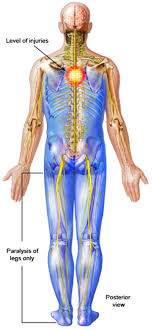
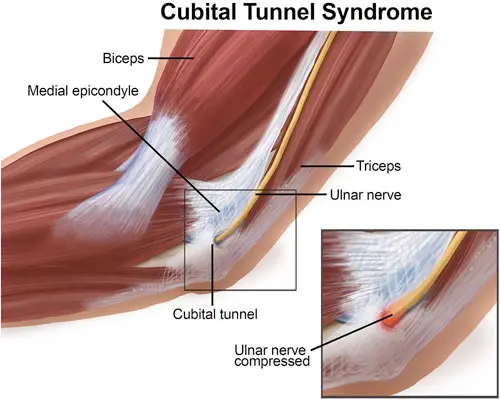
26 Comments